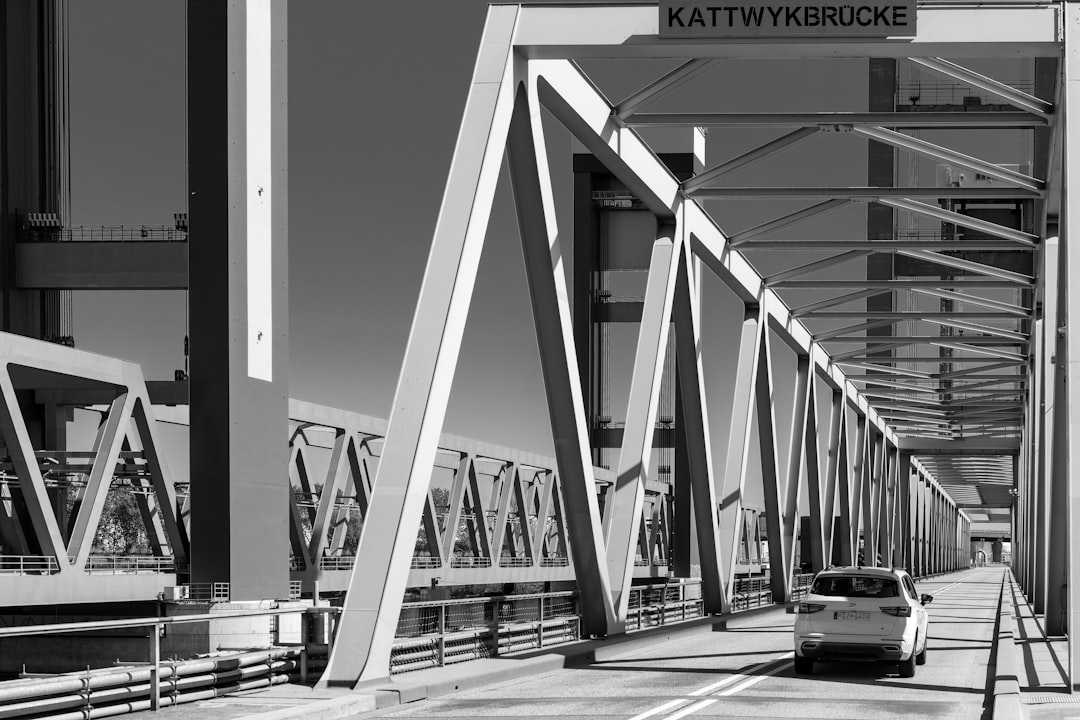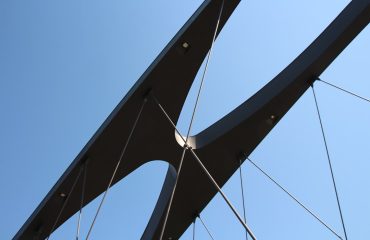Steel bridges, symbols of human ingenuity and engineering prowess, grace landscapes worldwide. Their elegant strength and longevity are the result of meticulous design processes, balancing aesthetics with structural integrity. This comprehensive guide delves into the key aspects of designing these magnificent structures.
1. Understanding Load Calculations: The Foundation of Bridge Design
Before a single steel beam is even considered, engineers must meticulously calculate the anticipated loads the bridge will endure throughout its lifespan. This involves far more than just the weight of vehicles. Load calculations encompass:
- Dead Loads: The weight of the bridge itself – the steel members, decking, concrete, and any other permanent fixtures.
- Live Loads: The weight of vehicles, pedestrians, and other moving elements. This requires considering factors like traffic volume, axle configurations of heavy vehicles (like trucks and buses), and even the potential impact of exceptional events (e.g., emergency vehicles).
- Environmental Loads: Forces exerted by wind, snow, ice, and temperature changes. These loads can significantly impact the bridge’s stability, especially in areas with harsh weather conditions. Wind loads, in particular, require sophisticated analysis, often involving wind tunnel testing for complex bridge geometries.
- Seismic Loads: In earthquake-prone regions, seismic loads are crucial. Engineers use sophisticated computer models to simulate the effects of ground shaking and ensure the bridge can withstand these potentially devastating forces.
Accurate load calculations are paramount; underestimating them can lead to catastrophic failure, while overestimating them can result in unnecessarily expensive and bulky designs.
2. Material Selection: Choosing the Right Steel for the Job
The selection of steel is a critical decision, impacting the bridge’s strength, durability, and cost. Various steel grades are available, each with its own properties:
- Yield Strength: The stress at which the steel begins to deform permanently.
- Tensile Strength: The maximum stress the steel can withstand before breaking.
- Ductility: The steel’s ability to deform before fracturing, an important safety factor.
- Weldability: How easily the steel can be joined using welding techniques.
Engineers consider the specific requirements of the bridge—span length, anticipated loads, and environmental conditions—to select the most appropriate steel grade. High-strength steels are often used for longer spans to minimize weight and material costs. Corrosion resistance is also a key consideration, often leading to the use of weathering steels or galvanized steel.
3. Design Considerations: Aesthetics and Structural Integrity
Steel bridge design isn’t solely about structural calculations; aesthetics play a significant role. Engineers must balance the need for a structurally sound bridge with its visual appeal. This involves:
- Arch Bridges: Elegant and efficient for medium to long spans, transferring loads through compression.
- Suspension Bridges: Ideal for very long spans, utilizing cables to support the deck.
- Cantilever Bridges: Suitable for long spans, with the deck extending from intermediate supports.
- Beam Bridges: Simpler designs, often used for shorter spans, using beams to support the deck.
The chosen design influences the selection of steel members (beams, columns, girders), their arrangement, and the overall bridge geometry. Detailed finite element analysis (FEA) is used to simulate the behavior of the bridge under various load conditions, ensuring its structural integrity.
4. Construction Techniques: Bringing the Design to Life
The construction phase requires precise execution to match the design specifications. This involves:
- Fabrication: Steel members are fabricated in workshops according to detailed drawings, often using advanced techniques like laser cutting and robotic welding.
- Erection: The assembled steel components are transported to the construction site and carefully erected. This may involve cranes, specialized lifting equipment, and precise alignment techniques.
- Connection Details: The connection of steel members is crucial for overall structural stability. Bolted connections or welds are carefully designed and executed to ensure proper load transfer.
- Quality Control: Rigorous quality control measures are implemented throughout the construction process to ensure adherence to design specifications and safety standards.
Modern construction techniques, including prefabrication and modular construction, can significantly speed up the process and improve efficiency.
5. Maintenance and Inspection: Ensuring Long-Term Performance
Even the most robust steel bridge requires regular maintenance and inspection to ensure its long-term performance and safety. This includes:
- Regular Inspections: Visual inspections are carried out to detect any signs of corrosion, damage, or deterioration.
- Non-Destructive Testing (NDT): Techniques such as ultrasonic testing and magnetic particle inspection are used to detect internal flaws without damaging the structure.
- Corrosion Protection: Regular painting or other corrosion protection measures are applied to prevent rust and extend the bridge’s lifespan.
- Repair and Rehabilitation: Any necessary repairs or rehabilitation work is carried out promptly to maintain the bridge’s structural integrity.
A well-maintained steel bridge can last for decades, providing safe and efficient transportation for generations to come.
Designing steel bridges is a complex and challenging endeavor requiring expertise in structural engineering, materials science, and construction management. The successful design and construction of a steel bridge are a testament to human ingenuity and the power of engineering.
SEO Tags:
- Steel Bridge Design
- Bridge Engineering
- Structural Steel Design
- Steel Bridge Construction
- Civil Engineering




